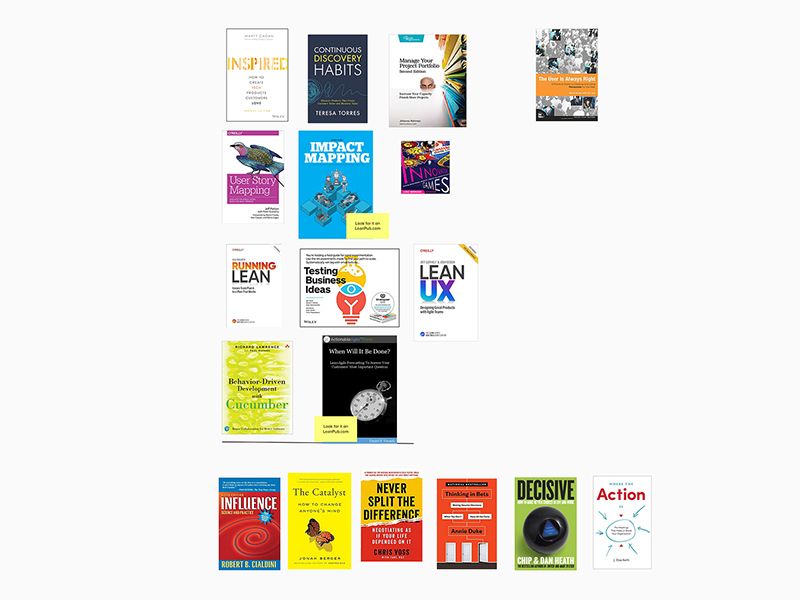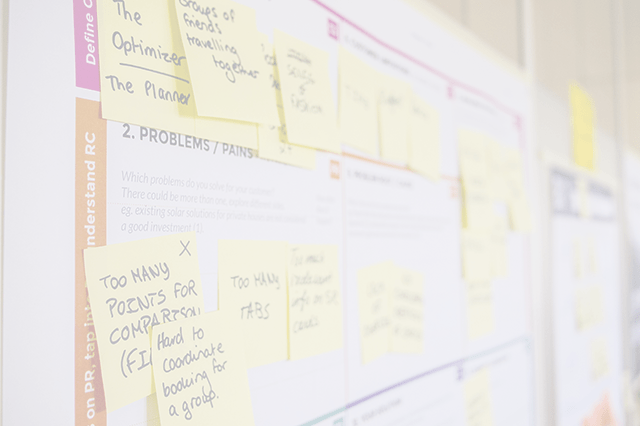Recommended Books for Scrum Product Owners
Here is a list that I share with my Certified Scrum Product Owner workshop of books that they might benefit from.
(Disclaimer: Some of these are affiliate links. It doesn’t cost you anything more and, at most, I might earn enough for a cup of coffee.)

Core
INSPIRED: How to Create Tech Products Customers Love by Marty Cagan - Marty has very strong opinions about Scrum. If we ignore his rhetoric, he is an original thinker and challenges us to do far more than satisfy our customers.
Innovation Games: Creating Breakthrough Products Through Collaborative Play by Luke Hohmann - One of the original Product Owner related books in the Agile world. This book is the source of many popular Vision (Product Box), Prioritization (Prune the Product Tree and Buy a Feature) and other activities. Nearly 20 years after it was originally published, this remains a strong recommendation.
The User Is Always Right: A Practical Guide to Creating and Using Personas for the Web by Steve Mulder and Ziv Yaar - The only book I have ever found that covers Personas. I admit this one is ripe for replacement.
Behavior-Driven Development with Cucumber: Better Collaboration for Better Software by Richard Lawrence and Paul Rayner - While the title focuses on a tool called Cucumber, the real value of this book is in driving better conversations within the team. The conversations lead to better acceptance criteria, which in turn reduce defects. Done well, BDD also increases throughput. Not quite magic, but close to it.
When Will It Be Done?: Lean-Agile Forecasting to Answer Your Customers’ Most Important Question by Dan Vacanti - Companion to the book I offered ScrumMasters on Flow Metrics for Scrum Teams. This book helps you make better forecasts so you can spend your time working with stakeholders to make tradeoffs as to which features they would like to see by a given date.
Strategic Tools
User Story Mapping: Discover the Whole Story, Build the Right Product by Jeff Patton - Story mapping helps you break down your vision into strategic stepping stones. Done well, it also allows you to show others where you’re considering taking the product without fleshing out much detail. This in turn makes it easier to say “not now” when a feature is requested in a product area that isn’t in focus right now.
Impact Mapping: Making a big impact with software products and projects by Gojko Adzic - Impact Mapping helps explore a wide array of paths to achieving a goal. The approach is a highly structured form of mind mapping. The idea is that the goal can be achieved through many paths, and sometimes the obvious path doesn’t get the best bang for the buck. Impact Mapping helps make the choices more clear.
Manage Your Project Portfolio: Increase Your Capacity and Finish More Projects by Johanna Rothman - Impact Mapping helps you explore choices; Story Mapping helps you visualize the options. Neither of these tools makes the choice for you. Portfolio Management is about using all of our strategic information to make better business decisions as a group.
Discovery and Lean Startup
*New addition: Continuous Discovery Habits: Discover Products that Create Customer Value and Business Value** by Teresa Torres - If Continuous Delivery is good for a Scrum Team building product, shouldn’t we invent an approach to speed the flow of discovering features? Continuous Discover Habits sets out to solve that problem.
Running Lean - 3rd Edition by Ash Maurya - The original Lean Startup book covers the concept well, but provides limited ideas around the implementation. Ash’s book steps into that gap. Further, the 1st edition of the book was created using a Lean Startup-like approach where the author posted a list of chapters he was planning to write and asked for feedback. Then he wrote each chapter in the open, asking the audience what he had missed along the way. Now in its 3rd edition, the book keeps improving.
Testing Business Ideas: A Field Guide for Rapid Experimentation by David J. Bland and Alexander Osterwalder - This book is both amazing and annoying at the same time. The amazing: it gives more context on how and when to use a larger variety of Discovery-flavoured experimentation techniques. It also has maps showing how the different techniques relate to each other. The annoying: like other books in this series, it costs the earth but the text is sparse, so the reader is often left hungry for precise implementation details.
Lean UX - 3rd Edition by Jeff Gothelf Josh Seiden - Lean UX is one approach to bringing User eXperience into the Agile world, without the lead time problem of other approaches. If the Lean Startup approach is focused on large-scale experiments (e.g. should we build a product or major feature in this space?), Lean UX focuses on the smaller question (e.g. which version of this feature will work best with our users?) Additionally, the book turns UX into a whole team sport vs. the domain of specialists.
The Human Side of Work
Why Motivating People Doesn’t Work…and What Does, Second Edition: More Breakthroughs for Leading, Energizing, and Engaging by Susan Fowler - The classic book on understanding human motivation (hint it’s not carrot and stick.) This book introduces the ARC Model
Your Brain at Work, Revised and Updated by David Rock - Covers how our brains do and don’t work during the working day. It’s a well-written book, marred only because the science has moved on in at least one area (willpower) and the 2020 edition of the book still relies on the invalidated work of Roy Baumeister.
The Catalyst by Jonah Berger - Cialdini (below) remains the most authoritative book on influence, however Berger has written the easiest read. Start here and then go deep with Cialdini.
Influence, New and Expanded: The Psychology of Persuasion by Robert Cialdini - As a Scrum Product Owner and agilist, you need to use influence on a daily basis. When you want the team to consider an experiment or an idea, you use influence. When you want management to resolve an organizational impediment, that will require more influence. Cialdini shows you how influence works. Outside of work, he shows you how companies like Amazon influence you every day.
Never Split the Difference: Negotiating As If Your Life Depended On It by Chris Voss and Tahl Raz - In theory POs have some authority over product decisions. In practice they need massively good negotiation skills because they don’t have enough in 90% of cases. Negotiation, contrary to popular belief, isn’t about agreeing on facts and finding a win-win. Real negotiation involves understanding the other party’s emotional needs. Until their needs are met, you can’t reach an agreement.
Thinking in Bets: Making Smarter Decisions When You Don’t Have All the Facts by Annie Duke - Teaches us how poker players make decisions under conditions of uncertainty, starting with the simplest idea: fielding errors. When I play a hand and win, that doesn’t necessarily mean I had good strategy. Maybe I was just lucky. When I lose a hand, that isn’t always bad luck, maybe I had a poor strategy.
Where the Action Is: The Meetings That Make or Break Your Organization by J. Elise Keith - Shows that there are 16 different kinds of meetings and they all need to be handled differently.
Remember
Think I missed an important book? If you’re part of our community, post your suggestion HERE.

Mark Levison
Mark Levison has been helping Scrum teams and organizations with Agile, Scrum and Kanban style approaches since 2001. From certified scrum master training to custom Agile courses, he has helped well over 8,000 individuals, earning him respect and top rated reviews as one of the pioneers within the industry, as well as a raft of certifications from the ScrumAlliance. Mark has been a speaker at various Agile Conferences for more than 20 years, and is a published Scrum author with eBooks as well as articles on InfoQ.com, ScrumAlliance.org and AgileAlliance.org.
